A global phylogenetic analysis of trap‐jaw ants, Anochetus and Odontomachus
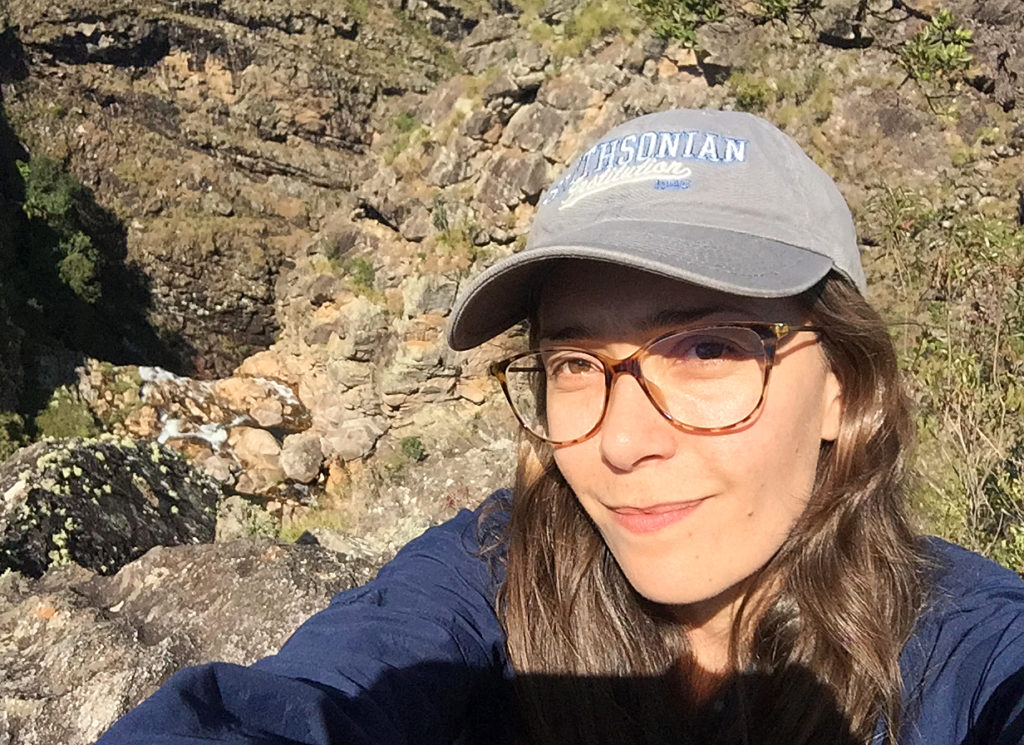
In the recent publication “A global phylogenetic analysis of trap‐jaw ants, Anochetus Mayr and Odontomachus Latreille (Hymenoptera: Formicidae: Ponerinae)” published in Systematic Entomology, Itanna O. Fernandes, Fredrick J. Larabee, Marcio L. Oliveira, Jacques H. C. Delabie, and Ted R. Schultz present a phylogeny of the trap‐jaw ant genera Anochetus and Odontomachus. They used four nuclear protein‐coding genes and one mitochondrial gene sequenced for 221 individuals of Anochetus (44 species) and Odontomachus (38 species). Analyses strongly supported monophyly of both genera and redefined species groups. Here, the first author Itanna O. Fernandes highlights the main points and shares some pictures.
An Interview compiled by Patrick Krapf, Lina Pedraza, and James Trager

MNB: Could you tell us a bit about yourself?
IOF: I am a postdoctoral fellow and collaborating professor at the National Institute of Amazon Research – INPA (Entomology Department) in Manaus, Brazil. I had a great desire to work with ants during my graduate program, but there was no specialist in myrmecology in our laboratory. So, I ended up defending my thesis on mosquitoes (Aedes aegypti). But I did not give up on my intention of studying ants. Whenever someone asks me how I started to work with ants, and I remember it like it was today. I was sitting on the floor outside of the lab, looking at the foliage, and I saw a big, robust ant (Paraponera clavata) passing from one leaf to another without spilling a drop of rain on the tip. So I thought, “Wow, what a big, strong, and delicate animal at the same time”. That was when I was “stung” or “bitten” by the myrmecology “bug”. The following year, I was approved in the INPA master’s selection (2009), and I finally started to work professionally with ants. During my master’s degree, I worked with integrative taxonomy to separate species of the foetida complex (Ponerinae: Neoponera) for the Neotropical region, and the review was published in Myrmecological News (Fernandes et al., 2014: Myrmecological News 19:133-163). During my PhD, I chose to use molecular tools to understand the internal relationships and the mechanism of evolution of trap-jaw ants. And since then, I have been working with integrative taxonomy, systematics, and ant evolution. In addition, I am an assistant curator of Formicidae at INPA since 2012.
MNB: Could you briefly outline your recently published article in layman’s terms?
IOF: We were curious about the internal relationship of the species group created by Brown (1976 and 1978) that were never tested before, at least not like we had, with several groups from every biogeographic region in the world. We also focused on understanding how the trap-jaw ants originated, including where and when. We were very fortunate in obtaining material, thanks to the myrmecological network around the world. To recreate the scenario of the early evolution of the trap-jaw ants, we used two different analyses, one using Bayesian inference and the other using maximum-likelihood criteria in an attempt to understand the internal relationships. The analyses recovered nine of the 12 species groups previously proposed for Odontomachus and nine of the 22 species groups previously proposed for Anochetus. Based on these results, the species groups are redefined. This was the most difficult part since Anochetus is very diversified in terms of the number of species and morphological characteristics. We have also recognized an additional new, previously unrecognized group for Anochetus, which was defined as the hohenbergiae group. This previously unrecognized group was also recovered in our analyses as possible ancestor of all living Anochetus species. Divergence-time analyses estimated the origin of Odontomachus and Anochetus to the early Paleocene (64.8 ma). Also, the biogeographic analyses suggest that the most recent common ancestor (MRCA) of Odontomachus and Anochetus occupied either the Neotropical or Afrotropical region during the late Cretaceous (81.5 ma). Unfortunately, we could not specify which continent because the analysis is estimative, and we do not have all species to tell a complete history of Anochetus and Odontomachus. During the examination of the individuals, we realized that many specimens were new species, as evidenced by the recent discovery of A. hohenbergiae, some of which may provide critical evidence about the evolutionary history of the two genera. The discovery of new species may be the most promising way forward for better understanding the evolutionary history of some groups.

Anochetus hohenbergiae head (© Itanna O. Fernandes) 
Anochetus hohenbergiae lateral (© Itanna O. Fernandes) 
Odontomachus mayi (© Itanna O. Fernandes)
MNB: What is the take-home message of your work?
IOF: The study ended up demonstrating how important it is to use molecular techniques, diversification, and biogeography to test morphological proposals. Although trap-jaw ants are widely known, it took more than 40 years for the internal relationships created by Brown (1976 and 1978) to be tested. It is also very important to emphasize that collaboration between research groups and institutions was the best way to achieve many of our results. Finally, I would like to point out that some internal groups of Anochetus still need to be studied due to the many new species. Groups mainly of Indomalayan origin are awaiting a description.
MNB: What was your motivation for this study?
IOF: The fact that for more than 40 years the informal groups of Anochetus and Odontomachus were not tested, even during this new age of molecular advances. I was also curious to know the placement of Anochetus hohenbergiae previously placed in the emarginatus species group. This species presents many distinctive morphological characteristics from the emarginatus group such as abundant pilosity, posterior margin of the head strongly concave, mandibles with a row of 13–16 teeth, unarmed propodeum, and a conical and spiniform petiole. The spiniform petiole is similar to the one in the Odontomachus species, making the placement of A. hohenbergiae in the Anochetus genus questionable. I also remember hearing from some colleagues that at the end of my analyses, I would realize that the genera would actually be a single genus. Usually, these comments started with the question: So, what exactly are the relationships within „Odontochetus“? 🙂 That made me a little bit worried because I have also proposed reviewing the Neotropical Anochetus species in my project.
MNB: What was the biggest obstacle you had to overcome in this project?
IOF: To be very honest, it was the language. I, as do many Brazilian students, had the opportunity to study abroad (Undergraduate, PhD candidates, and Postdoctoral students) between the years 2012-2016. I asked for a sandwich doctoral scholarship from a Brazilian development agency to develop my research at the Smithsonian Institution (SI Antlab). I knew that it would be tough to develop all the molecular work in Brazil, so I asked the SI Antlab for collaboration. So I ended up learning all molecular techniques in English, and in the beginning, it was not easy. Many people are afraid to admit it, but today I see it as a successful step. After overcoming the obstacle of the language, everything went well because I was in a very experienced group in ant phylogenetics and with fantastic network collaboration, which allowed me to overcome many limitations.
MNB: Do you have any tips for others who are interested in doing related research?
IOF: Yes, collaborate. If you have a question that involves organisms with wide distribution, collaboration is the answer to overcome many obstacles. You will also need to dedicate yourself because the molecular bench requires hard work and time as well as molecular analyses.

MNB: Where do you see the future for this particular field of ant research?
IOF: In the study of the undescribed species and also in the inclusion of some Anochetus groups that we did not have access to some species (i.e. africanus, emarginatus, gladiator, and risii species group). We believe that the inclusion of some of those species would clarify the evolution of some basal species in Anochetus. Adding more species from the Odontomachus genus group and outgroups would clarify the relationship of the sister group of trap-jaw ants. It is also our hope, that future studies will be able to use this phylogenetic hypothesis as a framework for answering a variety of evolutionary questions, including the origin and diversification of trap-jaw mandibles.


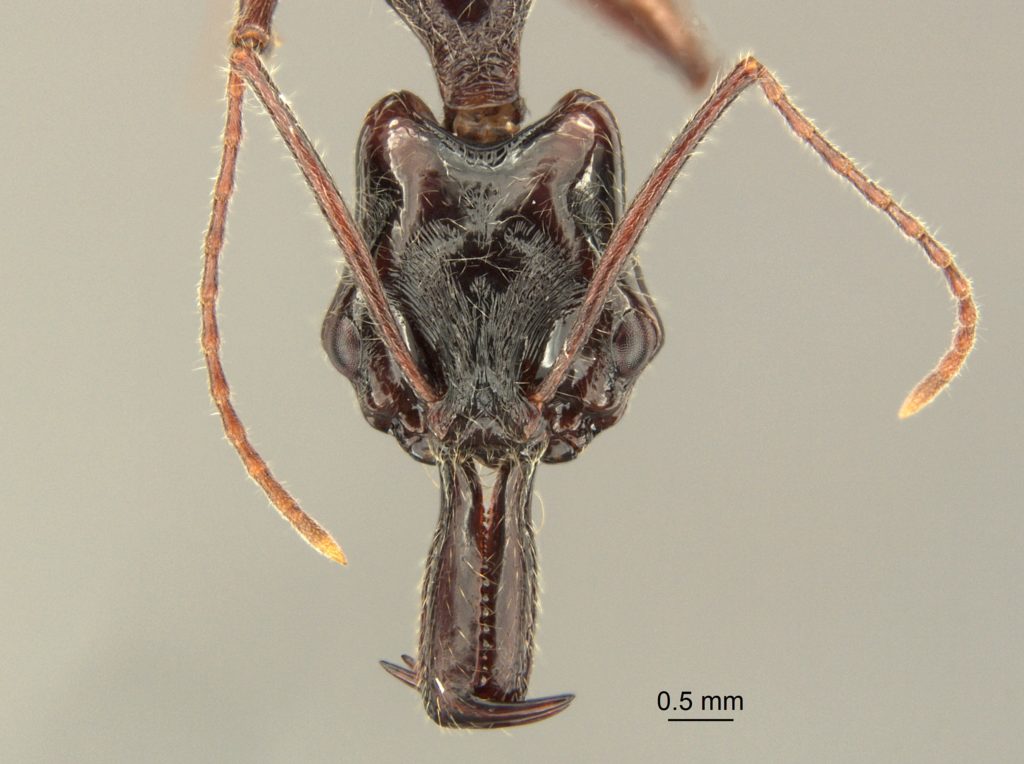
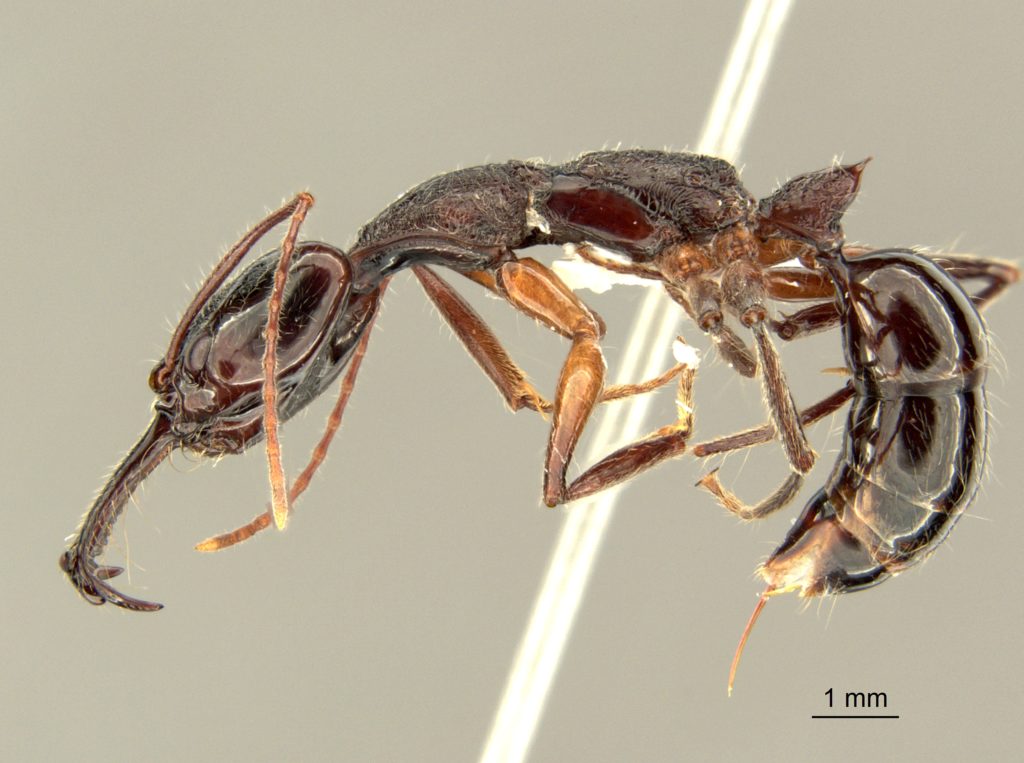
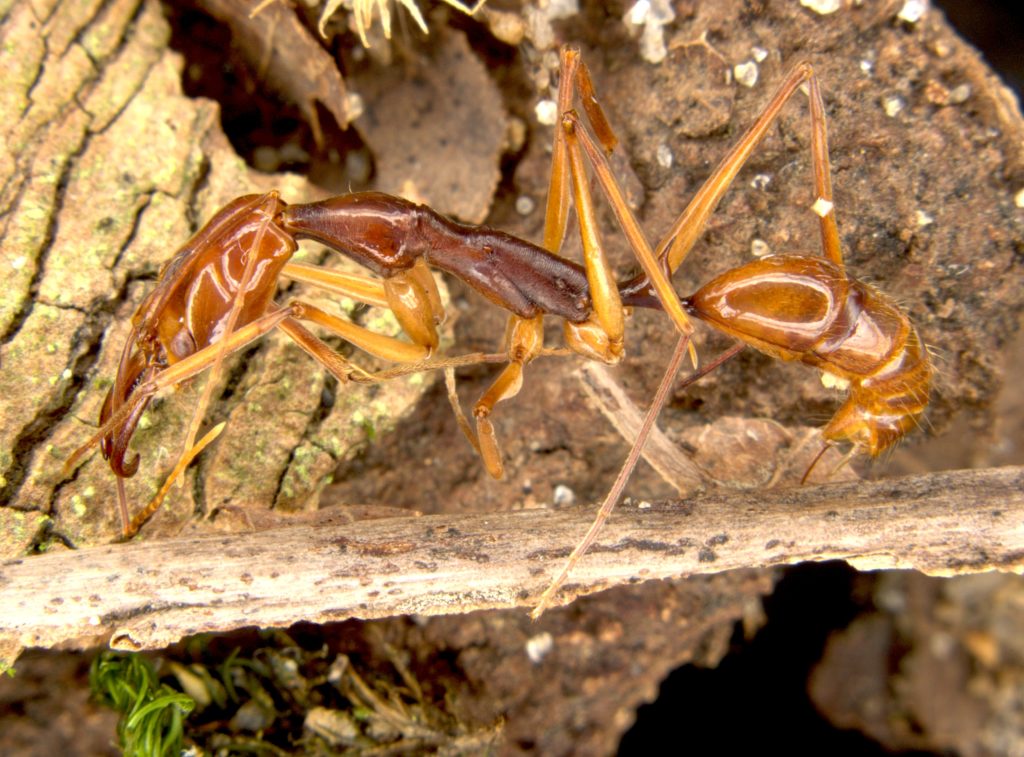



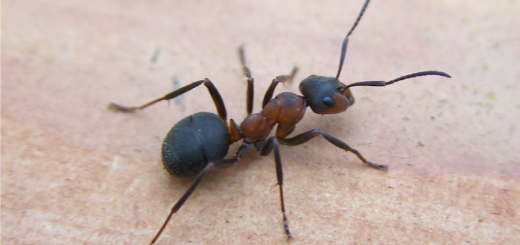
A very good article.